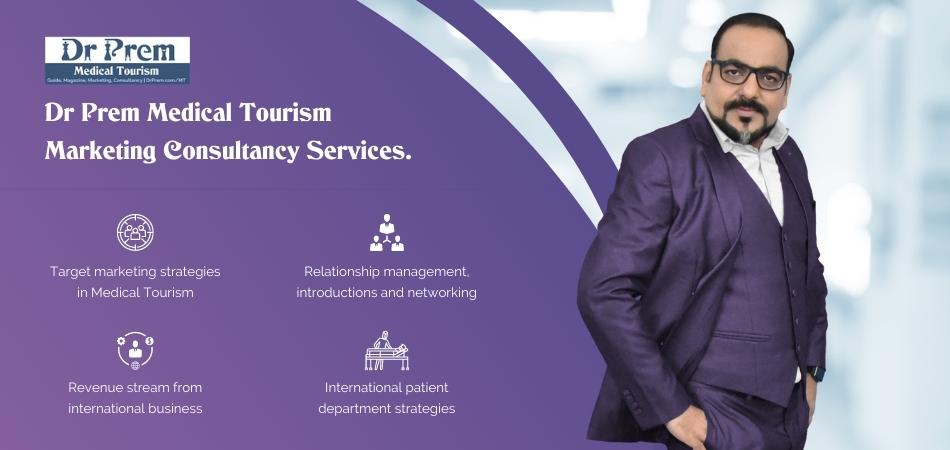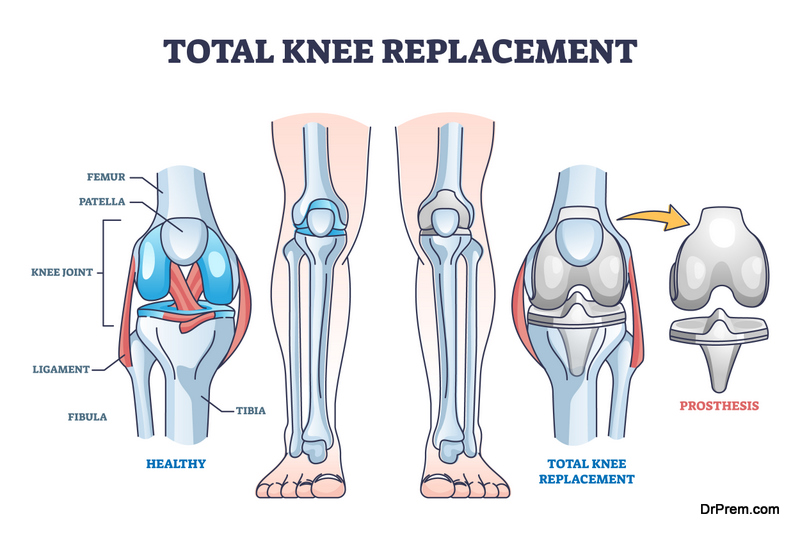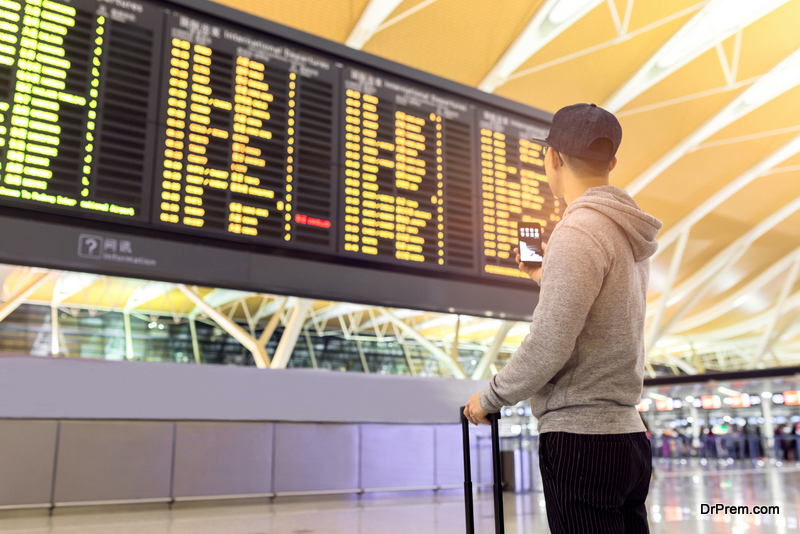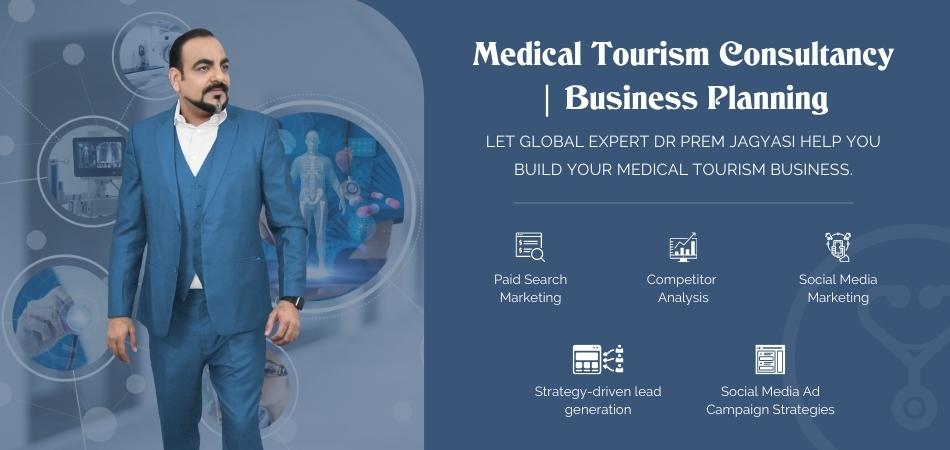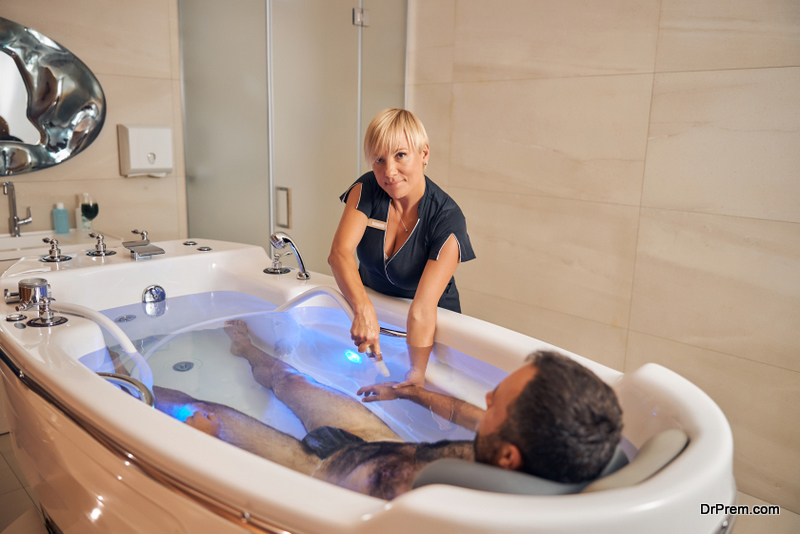With high quality healthcare infrastructure, excellent medical facilities and beautiful locale, Australia is bidding to be one of the major players of the medical tourism industry. Considering Australia eliminates many language and cultural barriers, it is a no-brainer that this small country down under attracts medical travelers from countries around the world.
Even though, Australia does not offer medical tourism in an organized way as the number of international inbound visitors meet the definition of a medical tourist. They place great emphasis on wellness tourism catering to those travelers seeking to improve their health.
In this guide, you will read about:
Guide to Medical Tourism in Australia – Facts, Trends, News, Services, Research, Business and Updates by Dr Prem
-
General
-
Health Related
-
Tourism Related
-
Location
-
People
-
Events
-
Weather
-
Australia – The country boosting medical tourism
-
Opportunities in Australian medical tourism, and the pitfalls that keep it struggling
-
Reasons behind the growth potential in Australia’s Medical Tourism Industry
-
Medical Tourism in Australia Trends
-
Quality of Healthcare
-
Healthcare System
-
Booming medical tourism industry from Australia
-
Why Australians move out for medical treatment?
-
Common medical procedures sought by Australians abroad
-
Most popular destinations chosen by Australians for medical tourism
-
Australian government allows outbound medical tourism after 19 months
-
Australia is celebrated for different kinds of spas
-
Australian medical tourism can flourish with more investment
-
The challenges in development of medical tourism industry
-
What does the future hold?
-
Growth Potential for Wellness and Medical Tourism in Australia
-
What are the benefits offered by Australian medical tourism providers?
-
Role of NIB in Growth of Australian Medical Tourism
-
How can inbound medical tourism of Australia grow?
-
Wellness tourism potential will complement medical tourism in Australia
General |
|
| Language | English |
| Time Zone | GMT(+8 to +10) summer(DST) (GMT+8 to +11) |
| Dialing Code | +61 |
| Electricity | 240V, 50Hz |
| Medical Tourism Status | Sydney, Melbourne, Brisbane |
| Currency | Australian dollar
|
| Clothing | Due to Australia’s warm climate, common Summer clothing
is often comprised of shorts, sleeveless shirts and thongs (footwear which is the equivalent of American flipflops).. |
Health Related |
|
| Mortality Rate | 5.8 deaths/ 1,000 live births |
| Life Expectancy | 80M / 84.3F |
| Patient: Physician Ratio | 400: 1 |
| Hospitals JCI accredited | 0 |
| Recommended Vaccinations | Rabies, Yellow Fever, Japanese encephalitis, Diphtheria- tetanus, Measles and Varicella |
| Other Infections | Leptospirosis, Queensland tick typhus, Scrub typhus, Barmah
Forest virus, Flinder’s Island spotted fever, Jellyfish stings, HIV |
Tourism Related |
|||
| Population | 23,170,982 | Reliability of Police Services | 16/140 |
| Global Competitiveness | 5.11/7 | Physician Density | 32/140 |
| Tourism Competitiveness | 5.41/7 | Hospital Beds | 45/140 |
| GDP/Capita | 67,722 | Quality of Air Transport Infrastructure | 29/140 |
| Health and Hygiene | 5.9/7 | International Air Transport Network | 24/140 |
| Safety and Security | 6.0/7 | Quality of Roads | 36/140 |
| Air Transport Infrastructure | 5.9/7 | Hotel Rooms | 32/140 |
| Tourism Infrastructure | 5.9/7 | Tourism Openness | 80/140 |
| Cultural Infrastructure | 5.2/7 | Attitude of Population Towards Foreign Visitors | 27/140 |
| Visa Requirements | 112/140 | ||
Australia, also known as the land of plenty, enjoys the dual status of being the world’s smallest continent and the sixth largest country (area wise). Tourists love visiting this prime tourist destination that flaunts a plethora of natural and manmade tourist attractions. Australia’s most popular tourist destinations include Sydney Harbor Bridge, Fraser Island, Great Barrier Reef, Scenic World, Kakadu National Park, Sydney Opera House, Port Arthur and National Gallery of Australia. National parks, tropical rainforests, galleries and museums make Australia the perfect place to explore.
Aside from being one of the oldest cities of Australia, Sydney represents the Aussie lifestyle and culture. Undeniably, it is the economic powerhouse of the nation. Adorned with shady avenues, parks and skyscrapers, Melbourne is the second largest city of Australia.
Location
Australia is a unique destination for those who wish to explore its wilderness area, mountain ranges, waterways and dramatic landscape. Avid surfers feel like heaven as they hit the shores of one of the world’s premier surfing destinations. Blessed with beaches, coral reefs and point breaks, Australia’s 37,000 km shoreline has always attracted thrill seekers.
Speckled with a million and a half hectares of rocky landscape, which further includes national parks, protected areas and alpine environment, Australia is home to several, exceptional plant and animal species. Anyone, who loves reveling in the call of the wild, would love to see the marine environment, lush green forests, fertile terrains and rich wildlife thriving in Australia.
People
Aussies are friendly people who believe in having congenial relations with tourists. They have always welcomed visitors with open arms. Since they are jovial people, they love wearing relaxed and casual clothes. Unless it is highly required or the occasion demands it, you won’t see them adorning their persona with formal attires. The people of Australia are primarily of Irish or British ethnic origin.
Events
The Australian events calendar includes several regional festivals and major sporting events as well, which allows a distinct blitheness and diversity to Australia’s rich culture. December marks the official start of the Aussie summer and the festival season as well. If you are visiting or planning to visit Australia in December, you are most likely to see Aussies kicking off their shoes, kicking up their heels and toe tapping in various local and international festivals.
You cannot afford to miss the Tour Down Under, the Australian Open, Melbourne Food and Wine Festival, Sydney Royal Easter Show, Melbourne Cup Carnival and the New Years Eve.
Weather
Covered by sand dunes, Australia’s 40 percent landmass is desert or semi-arid. As you head southeastern or southwestern Australia, the desert makes way for a rather temperate climate and moderately fertile soil. The northern part of the country has a tropical climate, which further varies between tropical rainforests and grasslands; nonetheless, it’s part desert as well. Rainfall is highly variable. Dust storms blanket a particular region or several states several times a year.
Australia – The country boosting medical tourism
Medical tourism is not a new concept. If we look a few centuries back, we will see that it originated from Greek. Greek remedial technology is considered the oldest and the most famous one. However, medical science has come across a long way. These days, Asia has emerged as one of the most important hubs for medical tourism business. The Asian medical tourism is transiting through an extreme phenomenal phase and opening up immense development opportunities in the medical tourism industry. Despite of several crest and troughs in the economy, the medical tourism sector is flourishing exceptionally manifolds over time.
Nowadays, a lion share of Australian population is visiting Asian subcontinents for health care and medical treatment purposes. The reason lying behind it is the inability to get expected services at reasonable rates at their own country. Australian currency is comparatively stronger than the Indian currency with a fraction of (1/80) approximately. A knee replacement costing 35,000 Aus dollars in Australia can be done by spending only 3200 Aus Dollars in India.
There is a proverb that if there are tides in the sea, it will increase the speed of every ship floating in it. Similarly, if economy is in boom, every industry will be benefited. It is happening with the medical tourism industry as well. People in Australia are searching for better medical care and treatment at affordable rates in order to secure their future savings, and they are getting satisfactory services like expert professionals, befitting medical staff, shortest waiting period, better medical care, availability of cheap meals, excellent transportation facilities, etc. in Asian hospitals.
A recent country-specific research and in-depth analysis of medical treatment and associated costs shows that the Asian subcontinent has best hospital infrastructure, expert resources for patients’ health and up to the mark technologies as per the present scenario.
Asian countries like India, Malaysia, Thailand and Turkey are having specializations in neurosurgery, laser surgery, knee replacement, hip replacement, cardiac surgery, spinal surgery and different types of infertility treatments. They are presenting medical tourism business as a superb source of revenue and that is why the governments of these countries are also showing great interest in promoting it.
However, Australian Medical Association (AMA) is concerned about the medical procedures offered by various Asian countries, which are taking people to overseas. The entity has been trying hard to make people aware of the fact that medical standards are significantly higher in the country as compared to other nations. It has also given a warning that without being examined carefully, Aussies should not expose themselves to other country’s hospitals.
Opportunities in Australian medical tourism, and the pitfalls that keep it struggling
As healthcare has become an essential commodity, patients are always looking for the best bargains. Seeing the huge opportunity of earning profit from medical tourism industry even the developed countries are trying to attract international patients. Australia too has started to promote its medical tourism facilities vigorously.
Millions of people are traveling each year from one country to another for better medical care. Australia has newly joined the bandwagon and started to draw a huge number of Asian affluent. The growth of its medical tourism industry may offer a boost to Australia’s economy but it is also affecting the local healthcare systems.
Growth of Australian medical tourism
According to reports made public by Business Review Australia, medical tourism has become a popular trend among the Australians. A considerable number of Australians are going to countries like Thailand, India, South Korea and Malaysia for medical treatments and cosmetic surgeries.
At the same time, foreign patients are coming to Australia for getting high quality medical treatments and facilities. The medical care infrastructure of Australia is highly developed. Thousands of patients from US, New Zealand and Asian countries have started trusting Australia over other countries. The size of Australia’s medical tourism industry is still comparatively smaller but it is growing at a quick speed.
Quality over price for many
Epworth, which is the largest group of private hospitals in Victoria, Australia, treats 600 international tourists annually from over thirty different countries across the world. A major number of their patients are from Singapore, Pacific Rim and Indonesia. They are demanding the ultra modern robotic surgery, in vitro fertilization treatment and other complicated treatments offered in Australian private hospitals of great repute.
People do not want to take chance with their health. There is a growing section of middle class people in Asian countries who have achieved the resources for buying high quality medical care. Australia is the best option for them to receive sincere medical attention.
Government is supporting medical tourism as well
At present Australia is getting around 10,000 medical tourists which is just 0.23% of the total number of tourists who visit this country. The government of different states of Australia is supporting the growth and expansion of medical tourism industry. The government of Victoria is trying hard to establish Melbourne as one of the leading medical tourism destinations.
The Health Minister of Victoria, David Davis has said that conferences will be held and inbound investments will be made for developing the medical tourism infrastructure. Australia still needs a strong framework laid by the government and government initiatives for inviting the medical tourists from different countries. Vigorous promotions and enhancement of facilities are needed by Australia’s medical tourism industry.
What about the locals?
A country can only offer surplus medical facilities to the patients abroad. The rapid growth of Australian medical tourism industry may become an obstacle for the local people in getting timely medical attention. The president of Australian Medical Association, Steve Hambleton, has warned against this folly saying that Australia should first meet the medical requirements of its citizens and only then look for international patients to serve.
He has also mentioned that they are facing a problem of not having a sizeable infrastructure for training sufficient number of doctors and nurses for fulfilling the domestic needs. The influx of affluent international medical tourists can deprive Australian citizens from getting proper healthcare services.
Slowly the medical tourism industry in Australia is growing in proportion. The impact of medical tourism may be good for the economy but it will also affect medical care facilities received by the locals.
Reasons behind the growth potential in Australia’s Medical Tourism Industry
The global medical tourism industry is expanding and growing rapidly, as medical tourism facilitator companies and providers work out budget packages. Even in Australia, the medical tourism industry is showing positive signs of growth and development. The size of the Australian medical tourism industry is not as vast as some of the leading countries but it has potential for future growth. There are several challenges that the medical tourism providers of this country are facing at present, but strategic investment and consistent performance can remove such impediments.
Medical tourism can bring foreign currency home and encourage more FDI in the healthcare plus tourism industry of Australia. The medical sector of Australia is trying to lower the costs of intricate operations including dental procedures and plastic surgery for making it easier for foreign medical tourists to afford the treatments.
Medical tourism and its scope
Before discussing the growth and development of Australian medical tourism industry one must understand the basic concepts of medical tourism and its prospects. The price hike of medical facilities, medicines and service are forcing patients from the developed countries to travel to the Third World countries for low cost medical treatments. Even some of the developed countries are providing medical tourism services in the hope of profits. With the increase of medical tourism facilitator companies it has become easier for people to avail treatments in other countries.
Some of the medical services and treatments that the medical tourists want are cardiac surgery, organ transplantation, cosmetic surgery, dental procedures, ophthalmologic care, gender reassignment and assistive reproductive technology. People who cannot get timely and first rated medical services in their own country or region also travel to different parts of the world for the sake of getting appropriate health care. The leading medical tourism providing countries are India, Malaysia, Thailand and Singapore. Medical tourists to these locations save up to 85% of medical procedure costs.
The SmartTraveller website created by the Australian Government states that the number of medical tourists is increasing steadily every year, and it has cautioned the medical tourists of Australia to be cautious about the destination they choose.
Medical tourism in Australia Trends
The medical tourism industry of Australia is comparatively smaller. This country accounts for just 0.001% of total medical tourists of the world. But, the number of foreign patients who visit different medical tourism destinations is steadily rising. Most parts of Australia are developed and the private hospitals cannot afford to offer medical treatments at rock bottom prices like the Third World countries. That’s why the medical tourism providers are trying to enhance the quality of services offered to patients. They are trying to offer pre and post operative care along with other necessary health care services to foreign patients. Due to its fragmented nature the Australian medical tourism industry, it has to face a number of challenges. A commissioned report on medical tourism in Australia for the year 2011 says that on an average, a single foreign patient spends $3,973 for 14 day long stay in the country. Brisbane, Melbourne, Sydney, and Tropical North Queensland have become the main medical tourism destinations.
Between 2005 and 2011, the medical tourism industry of Australian continent has increased by an estimated 14%. With more investment and governmental initiatives, the medical tourism industry of Australia will grow at a higher rate. By reducing the transportation costs and language barriers Australian medical tourism providers can attract more medical tourists from remote parts of the world.
Clever use of technology has already enabled the medical tourism providers in communicating with the foreign patients and setting up video conferences between patients and their caregivers. People are becoming more aware of the medical privileges offered by Australian nursing homes and private hospitals. Despite of being limited by geographic barriers and scattered across different regions, the Australian medical tourism industry promises to prosper more with investment and strategic leadership.
Quality of Healthcare
A recent international comparison claims that the Australian healthcare system ranks either first or second on several health indicators. Australia further promotes healthy lives. In general, the quality of healthcare in Australia in both public and private sectors is excellent when judged from the perspective of patients and providers, and is one of the reasons why medical tourism cost in Australia is higher compared to other nations.
The government-supported care provides their citizens with all-inclusive healthcare, while the private sector fills in the gap for any lacking facilities by providing an overall comprehensive care. The major Australian teaching hospitals have significant research profiles and the care is, undeniably, first-rate. Suburban and rural hospitals provide high-quality healthcare to medical tourists.
Healthcare System
Healthcare in Australia, better known as Medicare, is a combined responsibility of both the public and private sector. This mixed system gathers necessary finances mainly out of tax revenue, with the government contributing 70 percent, and the rest provided by private pay and insurance.
Medicare covers all Australians citizens who pay the entire cost of the treatment in a public hospital. It also reimburses the expenses toward visits to the doctors. The majority of healthcare facilities belong to the public sector (public hospitals have about 70 percent of beds and major teaching facilities). Those who prefer to choose private care gain access to private healthcare insurance; however, they are likely to pay more when compared to public sector.
Booming medical tourism industry from Australia
Medical tourism is becoming latest trend these days as every third American is crossing his national boundaries in order to avail excellent, hi-tech, and inexpensive medical tourism. Countries like Thailand, Singapore, India, Korea, and China are offering quality medical care to national and international patients at attractive prices. Patients are moving out of their comfort zones in order to avail treatment for various ailments. Cardiac surgery, oncology, gynecology, cosmetic surgeries, and dental procedures are the major types of treatments that are included in medical tourism.
Domestic medical tourism is predominant in Australia mainly due to inequity in healthcare services in the remote and regional locations. People from these locations have to take arduous travel for complex treatments or diagnosis in prime cities like Perth, Melbourne, Sydney, Brisbane, etc.
Outbound medical tourism in Australia
Australians spend around $300 million every year just on cosmetic surgery procedures abroad. Almost 15,000 Australians travel overseas for healthcare per year, and in groups sometimes. Some combine sightseeing, but others only travel for treatment, but in both cases, people go for the substantial savings, which could be upto 80% less than in Australia.
Why Australians move out for medical treatment?
- The government of the country offers various health insurance to its people. This covers all the medical expenses and funds them for medical treatments.
- Australian healthcare system funding is a blend of private health insurance and government funding. The healthcare scheme is universal accessible as Australians can avail the benefits of their health insurance from any part of the world. They can avail medical treatment in any country and their healthcare policy will fund their medical treatment.
- Australian health insurer like NIB offers coverage for cheap dental treatments in Thailand. It is also offering offshore cosmetic surgery to Australians that will give them a year guarantee on overseas medical treatments and surgeries.
- Many Australians suffer from various skin diseases, including skin cancer. They often move to countries like India, Thailand, and Singapore in order to avail the benefits of several alternative medicines and treatments.
- This includes yoga, homeopathy medicines, spas, and other therapies and traditional medicines.
- Australians also move out for treatment due to negligible waiting times in other countries.
- They can book treatments online but pay in cash.
- Privacy factor is also alluring, as cosmetic surgery patients can recover far away from people who know them.
- The healthcare packages offer a cheap opportunity to visit other countries.
Common medical procedures sought by Australians abroad
Cosmetic surgery, dental surgery and dental procedures, heart surgery, IVF as well other fertility treatments, stem cell therapy and cancer treatments are the most common procedures chosen by Australians. The popularity of gender confirmation surgery is also increasing.
Most popular destinations chosen by Australians for medical tourism
The surgeries and procedures which Australians choose abroad are available at much cheaper costs abroad. Australian patients travel to countries such as Indonesia, Philippines, Thailand, India, Singapore, Turkey, South Korea and Malaysia. These destinations are in demand due to their high quality treatments in a hygienic environment. Patients travel to the UK or US for experimental as well as alternative treatments which are not available in Australia.
Australian government allows outbound medical tourism after 19 months
The Australian government had restricted travel from Australia due to Covid-19, but as the leading medical tourism destinations have opened their borders, the government has now lifted the ban for medical tourism and tourism. Australians usually go abroad to South Korea, Thailand and Malaysia for dental care, weight loss treatments and cosmetic surgery, but for 19 months both inbound as well as outbound medical travel had been restricted.
With covid vaccination rates approaching 80%, the permanent residents and fully vaccinated Australians no longer have to apply for exemption to travel, starting from November 1. However, travelers to and from Australia will have to provide the vaccination evidence at the airport check-in and departure. Children under age 12 can travel without exemption. Unvaccinated people will require a travel exemption and will have to follow quarantine upon return to Australia.
The government also anticipated travel for international students as well as skilled workers who have been fully vaccinated. Inbound medical tourism and tourism will not resume till 2022.
Australia is celebrated for different kinds of spas
Australia is rich in various mineral spas and it is one of the finest destinations for spa tourism. It has various spa resorts that makes you feel relaxed and ailment free. People experience soothing therapies in various renowned wellness retreats. Most of the Australian resorts and hotels have spas are along the coastline, which offer special holistic and natural therapies. The therapists make the use of aboriginal herbs and lotions in order to release pain, stress, depression, and heal minor injuries.
Visitors can indulge in beach side spa and day spa in beautiful beachside locations. Hot and cold-water spring spas help to cure problems like body pain, muscle tension, backache, and other ailments. Apart from this, spas are known to have various properties that can cure and treat several psychological problems. This may include anxiety, depression, autism, energy blockages, and other problems.
It is also considered useful in treating many skin related problems and can be beneficial to make the skin look glowing and radiant.
Wellness tourism in Australia also offers quality accommodation facilities, which attracts more people in order to spend quality time in the world’s finest destination. It also offers various rejuvenation and relaxation therapists by using effective essential oils.
Australia holds 0.01 percent share of global medical tourism and the main reason behind this is the lack in local facilities. However, the country is rich in spa tourism as it has various hot and cold-water springs.
Australian medical tourism can flourish with more investment
Going by the current state of affairs, it would seem investors of Australia are not too eager to invest money in medical tourism. Medical tourism is a very potent branch of tourism, which can prosper and bring developmental changes in the arena of tourism. There are many factors that the Australian investors must not overlook while dismissing investment in medical tourism segment.
In recent years, medical tourism has turned into a highly profitable industry. Many countries like Singapore, India, Thailand, and Malaysia have emerged as the main players of this industry. Australia can also come at par with them with more investment and infrastructural development. For the proper growth of the medical tourism industry of Australia, a systematic and strategic investment is necessary.
The challenges in development of medical tourism industry
Losing to peers in price competitiveness
At present Australia has to compete with several low cost tourist destinations. These countries are capable of offering high quality medical treatments at much lower rates. The low taxation rates and low cost labor makes it easier for hospitals to make a profit despite substantially lower charges. Australian medical tourism industry is also challenged by the developed countries that have superior medical infrastructure and despite of the high costs, the rich patients want to get their treatments there.
Inadequate government support
The medical tourism industry of Australia needs consistent and continuous reinvestment for the proper maintenance of the infrastructure. Investment is also necessary for the long-term gains. Government incentive in the form of convenient taxation rules and general regulations are two of the main determinant factors that can either encourage or discourage the investors in putting their money in this segment.
The players of this industry need to give attention to evaluating the dynamics of the market. The needs and requirements of the medical tourists have to be fulfilled through innovative and first rated services. The medical tourism packages have to be attractive for this purpose. The medical tourism destinations have to market themselves carefully and establish a positive brand image for attracting the foreign patients.
The FDI in medical tourism industry of Australia is fairly low and local entrepreneurs are not yet showing interest in investing high sums. These are the main impediments that the medical tourism industry has to overcome. Another problem is that the investors have access to limited amount of data for understanding if their investment will bring returns or not. Australia is ruled by different levels of governmental sector. Getting approval from different governmental departments is a headache. It is also time consuming and increases the costs of handling tourism projects.
Medical tourism can flourish with more intense and strategic attention towards enhancing the tourist facilities and amenities. For giving the tourists a better experience, the tourism operators have to be concerned about infrastructure that does not directly fall under the territory of tourism. This increases the complexity and challenges for medical tourism providers. Government’s focus on other mainstream businesses has negatively affected medical tourism, as the regulations are favorable only for other industries.
What does the future hold?
The future can brighten only if some appropriate measures are taken. For example, proper research has to be conducted for finding out relevant data regarding productivity of medical tourism industry. The research results can help in making proper estimates about business investments and returns. Instead of focusing on bring down the costs of medical tourism the medical tourism providers should give more attention to improving the quality of products and services, to generate more inbound medical tourism in Australia.
Differentiating the services will help Australian medical tourism destinations build bigger customer bases. Tourism training courses and education will help in enhancing the workforce. Students should be encouraged to join this industry. Tourism is service centric and better workforce will definitely help its growth. The Government of Australia should promote this industry and take some positive initiatives for its growth, to reduce outbound medical tourism in Australia.
Growth Potential for Wellness and Medical Tourism in Australia
There are several factors influencing and motivating the foreign patients from developed countries to travel for healthcare. The modern middle class is more health conscious than their predecessors, and they want the best of everything. They are not ready to compromise with healthcare and travel to far off countries in the hope of better treatments and medical privileges.
Australia’s healthcare infrastructure is well developed, and in the past few years, the medical tourism industry of this continent has expanded at a fair pace.The executive director of medical services at the Epworth Healthcare, Professor John Catford has stated that he gets 600 foreign patients annually at present and is trying to increase this number. Comprehensive Cancer Center of Victoria is also planning new strategies for attracting the international patients. The fragmented nature of the medical tourism industry of this nation is one of the prime reasons behind its lagging growth rate.
The government has to take more initiatives for promoting the Australian medical tourism industry for attracting the foreign patients. Prosperity achieved by the medical tourism industry will give an indirect boost to the FDI of the nation. Researches are being conducted throughout Australia for collecting and presenting correct data regarding healthcare and tourism sectors. Unavailability of data has been discouraging the local investors from putting their money on this segment of tourism. With more information made available they might come forward to support the medical tourism providers.
What are the benefits offered by Australian medical tourism providers?
Modern lifestyle has become very hectic with workload, stress and recession issues. Traveling to a beautiful country like Australia can help the patients get away from their worries. The far-off location of Australia is attracting tourists who want to get cosmetic surgeries done without the knowledge of friends and family. Traveling to Australia also gives the international patients a chance to enjoy themselves and relax. There are several beautiful destinations to be visited and interesting things to do. The cuisine of Australia is delectable and the crowds are affable. All these work in favor of the medical tourism industry and promote its growth and development.
Presently, an approximate 65,000 to 85,000 international patients travel to Australia for treatments. The medical tourism industry in this continent is not as well organized as in Asian countries like Malaysia, Thailand, and India. The total estimated earning of the medical tourism industry of Australia is more than USD $2 billions. Australian healthcare centers and hospitals are trying to curb the costs and improve the quality of services for catering to the diverse needs of international patients with greater efficiency.
Role of NIB in Growth of Australian Medical Tourism
Medical Tourism has been estimated to be a hundred million US dollar industry spread over all the continents. In the beginning, it was just a trend followed by a handful of people who wanted to see the world and get the best medical services. With the price hike of medical facilities and services, the patients from developed countries started flocking to the developing countries for low cost treatments and healthcare services.
Australia is trying to compete with the already established players of this business. NIB Options might just help the growth of Australian medical tourism industry. The CEO of NIB, Mark Fitzgibbon has recently mentioned that in a decade’s time people will start demanding health insurance coverage for getting medical treatments outside of Australia. Many Australians are already traveling far and wide in the search of better medical facilities at cheap rates. At the same time, they are not ready to compromise with safety or quality. NIB is planning to monetize this growing trend by creating new range of policies to cover overseas treatments.
NIB has already started to sell its international healthcare covers in New Zealand and they are hoping to market the same product in Australia within the next 17-18 months. NIB is one of the best health insurance sellers in Australia, which has established itself as the first choice of many migrating students and workers. The $1.2 billion worth insurance company has sold health insurance covers to twenty thousand workers and thirty five thousand students who have migrated to Australia.
Fitzgibbon believes that the market for selling international health insurance covers is still narrow but it will widen with time. The CEO has also mentioned that the new venture will primarily focus on cosmetic and dental procedures. But if the initial offerings are successful then they would cover other aspects as well.
The NIB Options packages will consist of concierge services, flight tickets, accommodation, and treatment facilities. Fitzgibbon is looking at this as healthcare services supplying business and not exactly tourism though they will make arrangements for the tourists to live in luxury resorts for enjoyment, relaxation and recovery. The healthcare experts of Australia have already warned the citizens to not be lured by cheap cosmetic surgeries done in Asian countries like Malaysia and Thailand as they might not be satisfied with the results.
The new business plans of NIB can make the medical tourism providers of Australia face new challenges. NIB is indirectly promoting overseas medical tourism industries. However, Australian plastic surgeons are a part of the plans made by NIB. The clever company has them on board to correct the mistakes made by off-shore plastic surgeons, if any.
NIB has very recently announced that the customers will get 12 month long guaranteed coverage for choosing overseas hospitals it partners with. The Australian Medical Association has warned NIB not to commercialize medical treatments and healthcare facilities. If the Australian citizens are lured away from local hospitals and physicians, they will lose business.
The cost of medical facilities is not really low compared to US and UK. The Australian healthcare givers and medical tourism providers are trying to attract foreign patients by offering better medical care and improving the standard of healthcare amenities. The medical community of Australia sees efforts by NIB as detrimental to their efforts of making Australia a medical tourism destination.
The president of AMA, Dr. Steve Hambleton has issued a statement warning potential medical tourists out of Australia that they may face health risks abroad. While the warnings may be debatable, it shows AMA is not happy with the trend of outbound medical tourism from Australia.
How can inbound medical tourism of Australia grow?
There are some indications that inbound medical tourism in Australia may grow in the future, as some wealthy people from Asia Pacific region visited the country for medical treatment. The cost of treatments in Australia are much higher, so it can attract medical tourists who are affluent. There is also the problem of low number of hospital beds as well as skilled workers to service medical tourists. The visa process is very complex compared to countries like India, where medical visas are expedited.
Till now, the Australian government has not developed a policy to attract wellness or medical travelers, and even the private hospitals and clinics are not interested in inbound medical tourists, domestic or international. Though the dental clinics and hospitals are not happy about outbound medical tourism, counter claims have suggested that dental treatments are priced very high, and thus unaffordable for many locals.
However, patients from Pakistan and China have come to Australia for treatments which were not available there, or the quality of treatment was poor. An example of a medical tourism companies of Australia which have managed to attract international patients is MCA or Medical Care Australia, which was founded in 2016 by specialists and doctors. It mainly targets patients from Pakistan and China, and provides second opinions online as well as consultations inexpensively.
Epworth Healthcare hospitals also claim to have treated 600 international patients per year, belonging to over 30 countries, including USA, New Zealand, Indonesia, Singapore and the Pacific Rim. They also treated tourists who fell ill unexpectedly while traveling in Australia. Compared to their number of domestic patients, the number of international patients is quite small.
A new fully equipped heart hospital in Victoria, the Victorian Heart Hospital which is due for completion in 2022, is expected to attract international patients. Patients will also have access to telehealth technology, thus receiving expert advice as well as care without traveling. Telehealth is expanding in Australia and there have been successful trials of US patients being treated in Australia through telehealth.
Sydney’s Macquarie University Hospital (MUH), specialising in neurosurgery, eye surgery and limb reconstruction is also keen to get into medical tourism.
Findings of the Deloitte report
The Deloitte Access Economics was commissioned by the Australian government’s Department of Resources, Energy and Tourism (RET) to conduct a study on the viability of outbound medical tourism in Australia. The report was based on available information in 2010. The report found that the medical tourism market was scattered and small.
According to the report, the total number of medical tourists flying to Australia was 12,800 which was only 0.23% of the total tourists coming to the country. However, the report also found that in the period between 2005 to 2010, medical tourism had increased by 14 to 15% whereas the increase in regular tourism was only 2%.
The average medical tourist, in 14 days, spent around $3,973 on flight tickets, accommodation, treatment and others, and main cities they visited were Sydney, Brisbane, and Melbourne, as well as Tropical North Queensland. In contrast, the average tourist stayed for 34 nights approx and spent around $3,276 in total, in similar destinations and activities.
The study identifies, UK, US and New Zealand as potential source market for and South East Asian countries as the main rivals, including India, Singapore, South Korea, Thailand, Germany, Mexico and Costa Rica.
Australia cannot compete on price but can compete on providing high quality healthcare in niche specialties such as bariatric surgery, corrective plastic surgery, dermatology and fertility treatments. However, countries such as India and Singapore provide high quality treatments at much lower costs.
The report suggested that Australia could market to a niche segment of people in the middle to high income earners in India, China, and neighboring destinations.
There is scope for inbound medical tourism to grow in Australia but bed capacity needs to increase, skilled workforce developed and publicity of Australia as a medical tourism destination has to be generated to attract patients.
Wellness tourism potential will complement medical tourism in Australia
Wellness tourism is defined as journeys undertaken by tourists for the primary reason of maintaining health as well as well-being. Wellness tourism providers facilitate offerings specially designed to enhance the physical, psychological, social and spiritual well-being. The emphasis is on water-based treatments for the body and face, detox, behavior and rejuvenation change, emphasis on meditation, contemplation, and learning.
A study recommended that Australia could develop the wellness tourism sector, as it already has several Day spas, Bath Houses, and Wellness therapies for skin and body. Wellness providers might have a better influx of tourists if they combined Wellness with Nutrition, Relaxation and Fitness offerings. Regions which have naturally occurring water supplies, local produce or plants can use these to create Wellness Services.
Australia has the potential to attract tourists looking for unpolluted clean air, original cultural traditions and use of products such as tea tree oil. The government can develop a policy to promote Health and Wellness allocation resources and incentives where possible.
The industry would have to focus on accreditations such as AQF-accredited qualifications, provide the best practice business models to people such as training, risk management administration, sustainability and more.



